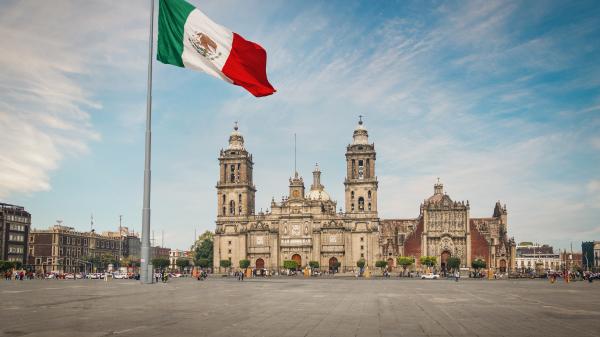Mexico Ends DST on Sunday, October 31, 2010
Daylight saving time (DST) will end in most of Mexico, on Sunday, October 31, 2010.

Parts of Mexico end DST on October 31.
©iStockphoto.com/diegograndi
Parts of Mexico that will not end DST on October 31 include Sonora, which does not observe DST, and Northern Mexico’s border cities, which will end their DST schedule with the United States on November 7.
The nation will move its clocks one hour back from 2am (02:00) to 1am (01:00) local time on October 31. Mexico’s 2010 DST schedule ends one week before DST ends in the United States and Canada. Moreover, Europe’s DST schedule also ends on Sunday, October 31, 2010.
Mexico Ends DST Schedule One Week Earlier than USA
Mexico’s DST schedule ends on the last Sunday of October, when the clocks move back from 2am (02:00) to 1am (01:00) local time. Mexico will return to standard time on Sunday, October 31, which is one week earlier than the United States’ DST end date of November 7. The United States’ Energy Policy Act of 2005 extended the United States’ DST schedule by one extra week in the fall (autumn) a few years ago.
The border areas of Mexico and the United States will experience a one-hour time difference with most of Mexico for one week until the United States reverts to its standard time on Sunday, November 7, 2010.
Mexico’s Congress passed a law in December 2009, bringing the DST schedule observed by northern Mexico’s border cities to be in line with the United States' DST schedule.
People living and working around the border areas will have to remember the one-hour time difference for one week. The different DST schedule will affect the following areas:
- Tijuana & Playas de Rosarito.
- Ensenada.
- Mexicali.
- Tecate.
- Ciudad Juarez.
- Ojinaga.
- Ciudad Acuña.
- Piedras Negras.
- Anahuac.
- Nuevo Laredo.
- Reynosa.
- Matamoros.
Mexico’s Time Zones and DST
Daylight saving time in Mexico annually begins on the first Sunday of April, when the clocks move forward by one hour from 2am (02:00) to 3am (03:00) local time. Sonora does not observe DST so there is no time change in that area. However, Baja California and parts of Northern Mexico’s border cities have a new DST plan that does not follow the same DST schedule as Mexico, but follows the same DST schedule as the United States. These Northern Mexico border cities will annually begin DST on the second Sunday of March and end on the first Sunday in November.
Daylight saving time is referred to in Spanish as “horario estacional” or “horario de verano”. According to Mexico’s law, in order to change the DST plan in Mexico, changes or suggestions for daylight saving time must be presented to the national congress by November 15, which must then be made official by December 15, in the previous year.
Mexico observes three different time zones:
- Central Standard Time (CST), which is six hours behind (UTC-6) and applies to most of the country including Mexico City. During daylight saving time, this region observes Central Daylight Time (CDT), which is five hours behind (UTC-5).
- Mountain Standard Time (MST), which is seven hours behind (UTC-7) and applies to states such as Baja California Sur, Chihuahua, Nayarit, Sinaloa and Sonora. During daylight saving time these areas, except Sonora, shift to Mountain Daylight Time (MDT), which is six hours behind (UTC-6).
- Pacific Standard Time (PST), which is eight hours behind (UTC-8) and applies to areas such as Tijuana and Baja California. During daylight saving time, these areas shift to Pacific Daylight Time (PDT), which is seven hours behind (UTC-7).
The islands, reefs, and cays that are part of Mexico observe the appropriate time zones allocated to them depending on their geographical location.
Note: References to fall or autumn in this article relates to the season in the northern hemisphere.